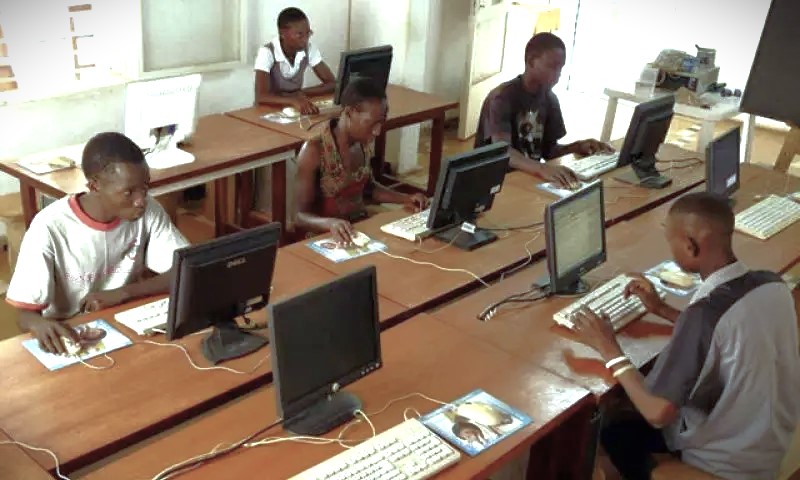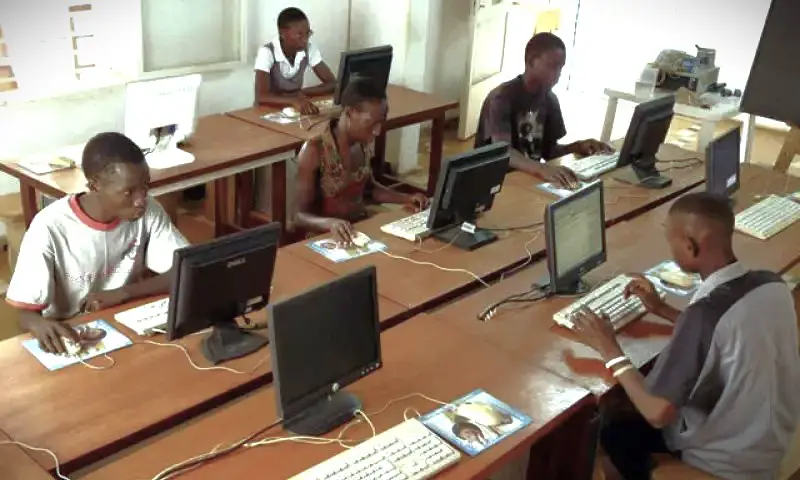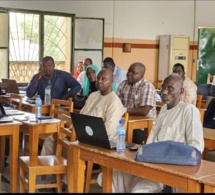
The future of the African continent depends upon the full utilization of the human capital available ; and women account for half of its population.
« Throughout the world, and particularly in Africa, there is a stark under-representation of women in Science, Technology, Engineering and Mathematics (STEM) professions », says the African development Bank.
The leaky pipeline of women and girls begins as they start and progress through their schooling and enter into science and technology-based careers. In Cameroon for exemple, many girls leave school before the high school level. The ratio according to the ministry of Education in Cameroon is one girl to five boys at the final stage of the high school.
According to UNESCO estimates, only 30% of researchers in sub-Saharan Africa are women, with the gender gap especially apparent in disciplines such as mathematics, engineering and computer science.
The American Scientific magazine estimates that « only 20 percent of computer science and 22 percent of engineering undergraduate degrees in the U.S. go to women ».
Studies also indicate that women in STEM are paid less, publish less and do not progress as far in their careers compared to their male counterparts. This is a loss for the science, technology and innovation field - and for society.
Ojong Geodeon who works at the Ministry of Women’s affairs in Cameroon explains that hat women are less interested than men in computer science and engineering. « You should understand that in some parts of Cameroon, parents don’t even understand why girls should go to school. Some parents send their grils for early marriages at the age of 15. This is particular in the northern parts of the country », explains Mr Geodeon. « There is believe that girls are less interested than boys in computer science and engineering. Girls who strongly endorse these stereotypes show the lowest interest in computer science and engineering during their school careers », argues Mr Geodeon.
Between 2005 and 2017, the African Development Bank invested $2 billion in 70 education projects, with a primary focus on science and technology. According to the Bank, the major goal here was to speed up the enrolment of girls in STEM through affirmative action measures. Such measures included providing scholarships and gender-sensitive educational services, designed to act as direct incentives to encourage girls to go to school, undergo training, opt for relevant research areas and disciplines, and succeed in their social and productive lives in general.
The Bank is proposing medium to long-term approaches that we can adopt to leverage science and technology as a tool for women’s socio-economic empowerment.
« First, we should create opportunities for girls to complete basic education. Second, we must target reforms in the education system that encourage girl’s interaction with science and technology from a young age and encourage their interest in STEM as they transition through every level of schooling. Third, we must make science, technology and innovation more attractive and relevant for women and girls. Finally and I would proffer, most importantly, we must change social norms and attitudes about women and girl’s participation in ‘male dominated’ or ‘technical roles’ ».
« Throughout the world, and particularly in Africa, there is a stark under-representation of women in Science, Technology, Engineering and Mathematics (STEM) professions », says the African development Bank.
The leaky pipeline of women and girls begins as they start and progress through their schooling and enter into science and technology-based careers. In Cameroon for exemple, many girls leave school before the high school level. The ratio according to the ministry of Education in Cameroon is one girl to five boys at the final stage of the high school.
According to UNESCO estimates, only 30% of researchers in sub-Saharan Africa are women, with the gender gap especially apparent in disciplines such as mathematics, engineering and computer science.
The American Scientific magazine estimates that « only 20 percent of computer science and 22 percent of engineering undergraduate degrees in the U.S. go to women ».
Studies also indicate that women in STEM are paid less, publish less and do not progress as far in their careers compared to their male counterparts. This is a loss for the science, technology and innovation field - and for society.
Ojong Geodeon who works at the Ministry of Women’s affairs in Cameroon explains that hat women are less interested than men in computer science and engineering. « You should understand that in some parts of Cameroon, parents don’t even understand why girls should go to school. Some parents send their grils for early marriages at the age of 15. This is particular in the northern parts of the country », explains Mr Geodeon. « There is believe that girls are less interested than boys in computer science and engineering. Girls who strongly endorse these stereotypes show the lowest interest in computer science and engineering during their school careers », argues Mr Geodeon.
Between 2005 and 2017, the African Development Bank invested $2 billion in 70 education projects, with a primary focus on science and technology. According to the Bank, the major goal here was to speed up the enrolment of girls in STEM through affirmative action measures. Such measures included providing scholarships and gender-sensitive educational services, designed to act as direct incentives to encourage girls to go to school, undergo training, opt for relevant research areas and disciplines, and succeed in their social and productive lives in general.
The Bank is proposing medium to long-term approaches that we can adopt to leverage science and technology as a tool for women’s socio-economic empowerment.
« First, we should create opportunities for girls to complete basic education. Second, we must target reforms in the education system that encourage girl’s interaction with science and technology from a young age and encourage their interest in STEM as they transition through every level of schooling. Third, we must make science, technology and innovation more attractive and relevant for women and girls. Finally and I would proffer, most importantly, we must change social norms and attitudes about women and girl’s participation in ‘male dominated’ or ‘technical roles’ ».
 Menu
Menu
 Gender inequality in the computer science industry
Gender inequality in the computer science industry





















